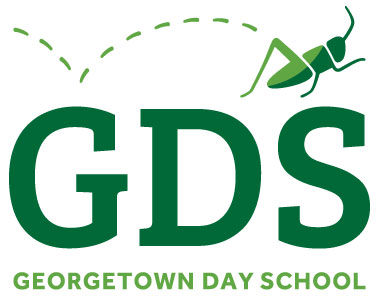Chances are if you spend any time around schools you have heard the term ‘executive function’ in the last year at least once, twice, or 146 times. As the department chair of learning services at Georgetown Day School, and a learning specialist in Washington, DC for over ten years, I find this ubiquitously used term sometimes confusing to parents, students, and teachers alike.
With an increased understanding of cognitive function, as well as an increased understanding of the hallmark characteristics of (traditional) academic success, families and educators are bombarded with resources describing strategies for developing executive function, coaches and tutors specializing in executive function, and myriad tools to support these skills. So, what is executive function? What does executive function look like in schools? What can we do to support executive function development?
What is executive function?
The term “executive function” includes several key cognitive skills that impact many of the aspects that surround school. For example, while often used synonymously for organization or planning, these two essential ingredients that enable full participation as a student are actually the byproduct of executive function. While several definitions for executive function exist, I find the following (from Martha Denckla) most helpful:
Executive function is the orchestration of several cognitive skills needed in order to complete a task. These cognitive skills include:
- Initiation: the ability to begin a task, with or without prompting.
- Sustain: the ability to continue work on a task for a set period of time or to completion.
- Inhibition: the ability to delay response to stimuli in order to continue on a given task.
- Shift: the ability to transition with ease to another task.
Upon reading this definition, I find myself unable to tally up how often I use these skills in a single hour, let alone a single day!
What does this look like at school?
Let us imagine it is 8:10 in the morning and Atticus, an (imaginary) fifth grade student walks into his classroom. As expected, he finds the morning message from his teacher and a morning journal prompt. Atticus needs to complete the journal entry prior to the start of morning meeting at 8:45 a.m.
If all goes according to plan, Atticus will utilize his developing executive function skills to complete this task. First, he needs to initiate the task by locating his materials, reading the prompt and organizing his thoughts, and getting started on the writing. In order to complete the task, he must continue his efforts throughout the duration of his writing (sustaining). This involves a particularly key component to executive function, inhibition. If Atticus is to complete his writing in time for morning meeting, he must be able to delay response to all possible distractions—friends entering the classroom late, for instance—that could potentially derail his progress. Finally, in order to fully complete a task, he needs to be able to move onto the next one. And so around 8:40 a.m., Atticus, must recognize that he is (hopefully) getting to task completion and needs to ready himself to join the morning meeting (shifting).
It is not difficult to apply this example to a very young child in kindergarten, to an 8th grader in middle school, or to an 11th grader in our high school. The tasks, possible distractions, level of independence, and length of time change, but not the essential cognitive skills. Developed executive function skills connect a range of processes necessary for success in life inside and outside of school, including regulating behavior, efficient working memory, planning, organization, and self-directed activities.
How do we support the development of executive function skills?
- Be clear. It is much easier for children to meet our expectations if we make those expectations known in a clear and concise way. Children can’t hit the mark if there isn’t a target. A student’s ability to initiate and sustain a task to completion will increase if they know each step of the task. Further, they can identify the areas in which they can be independent or where they might need assistance, an advanced metacognitive skill. For the first grader, this could be using fingers to count off multi-step directions, while for a ninth grader, this could be carefully breaking down a paper into smaller chunks.
- Be consistent. Just like when a third, sixth, or ninth grader was a six-month old baby trying to learn to sleep through the night, consistent routines aid in forming healthy habits. Predictability goes a long way in the development of executive function skills. When a child can depend on the homework being written in the same place each day, the likelihood of completing one task and moving onto the next one increases.
- Use parallel talk. Children are highly perceptive, constantly picking up on our cues as little bread crumbs throughout the day. When you are puzzling through something challenging, or needing to shift from one task to another before you’re finished, share your thinking! For example, in a recent meeting with a 12th grader, we discussed how to back plan in order to meet a deadline for an upcoming essay. I used my own deadline for this blog entry and back planned aloud (this is called parallel talk) in order to model the way I planned to sustain my efforts to task completion.
- Be patient. Perhaps this seems obvious. In my work as a teacher and in my efforts as a parent, I find the very concrete reminder that executive function skills are not only developing, but an ever-sharpening set of skills, to be enormously helpful in my work with children.


